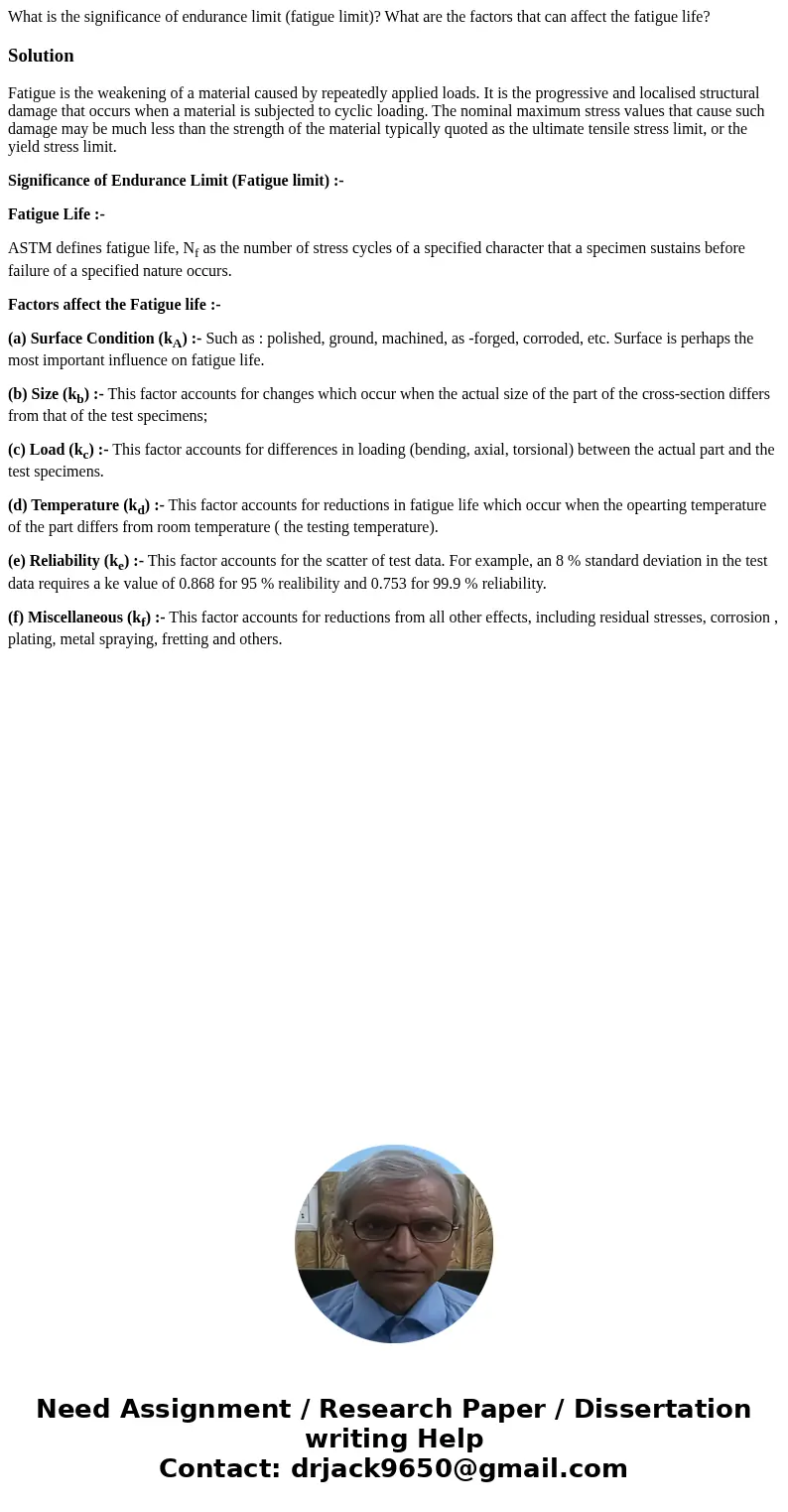What is the significance of endurance limit fatigue limit Wh
What is the significance of endurance limit (fatigue limit)? What are the factors that can affect the fatigue life?
Solution
Fatigue is the weakening of a material caused by repeatedly applied loads. It is the progressive and localised structural damage that occurs when a material is subjected to cyclic loading. The nominal maximum stress values that cause such damage may be much less than the strength of the material typically quoted as the ultimate tensile stress limit, or the yield stress limit.
Significance of Endurance Limit (Fatigue limit) :-
Fatigue Life :-
ASTM defines fatigue life, Nf as the number of stress cycles of a specified character that a specimen sustains before failure of a specified nature occurs.
Factors affect the Fatigue life :-
(a) Surface Condition (kA) :- Such as : polished, ground, machined, as -forged, corroded, etc. Surface is perhaps the most important influence on fatigue life.
(b) Size (kb) :- This factor accounts for changes which occur when the actual size of the part of the cross-section differs from that of the test specimens;
(c) Load (kc) :- This factor accounts for differences in loading (bending, axial, torsional) between the actual part and the test specimens.
(d) Temperature (kd) :- This factor accounts for reductions in fatigue life which occur when the opearting temperature of the part differs from room temperature ( the testing temperature).
(e) Reliability (ke) :- This factor accounts for the scatter of test data. For example, an 8 % standard deviation in the test data requires a ke value of 0.868 for 95 % realibility and 0.753 for 99.9 % reliability.
(f) Miscellaneous (kf) :- This factor accounts for reductions from all other effects, including residual stresses, corrosion , plating, metal spraying, fretting and others.

 Homework Sourse
Homework Sourse